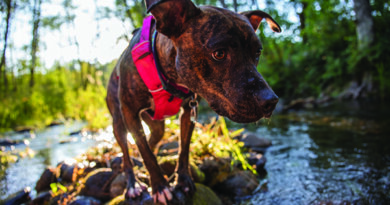Should I Leave a Light On For My Dog At Night? Our Vet Explains – Dogster
When you crawl into bed at night or leave to go out, should you leave a light on for your dog? Does your dog care if they are in the dark or would they prefer a lamp or two being kept on? The short answer is that it’s not a bad idea, but may not be necessary. If your dog is older, or does better with a routine schedule, then leaving a light on may be beneficial. However, for puppies, younger and/or working dogs, leaving a light on may not be necessary.
Can My Dog See in the Dark?
Dogs and humans, while their eyes may appear similar, are different. Humans are able to perceive multiple different colors and hues due to structures called cones in the back of their eyes. While dogs also have cones, they only have two different types of cones as compared to a human’s three. It’s unclear whether or not dogs are only able to “see” blue and yellow, interpreting red and green as shades of gray. Or, if the dog only sees in shades of gray. Therefore, in low light, we are uncertain if dogs would have trouble or better ability to interpret shades of color.
In addition to having less types of cones in their eyes, dogs also have more rods, which help distinguish between dark and light. Dogs also have an additional reflective layer in the eye called the tapetum lucidum, which increases magnification of the light that does enter the eye, allowing better night vision. Even though dogs do not see as sharply as humans, studies suggest they see movement better and do have better low-light vision.
These things would lead us to believe our dogs fare well in the dark. This is absolutely true, if your dog is young and otherwise healthy. When was the last time your dog accidentally stubbed their toe in the dark while navigating to the bed? Likely never. However, as with humans, older dogs’ vision is not as accurate and they may have increased difficulty seeing in the dark as they age.

What Are the Benefits of Leaving a Light On?
With older dogs, their vision may start to become more blurry as the lenses of their eyes mature. Because of this, they may start to have difficulty seeing and/or navigating in the dark. Some older dogs will become nervous or tense when it’s dark because they know they aren’t able to see well. Others may pace or sleep in unusual places that make them feel safer than they used to feel in the dark. Leaving a light on may help older dogs whose vision may be starting to become fuzzy.
If your dog is one who is very used to routine, leaving a light on when you leave may help them recognize that you will be coming home. Leaving the light on for them when they are alone is the routine of assurance that you’re coming back. It may help them to know that after getting home, you will then turn the lights out at night, signaling to them it’s bedtime. Some people also feel bad about leaving their dogs in the dark if they are leaving the house but coming back. Leaving a light on may help owners more than dogs in some situations.
Still, leaving a light on when you aren’t home was also taught to be done by many of us to deter strangers and burglars. Why not leave a light on to send a false signal to potential strangers that someone may be in the house?
When Should You Turn the Light Off?
When puppies are younger or you are training a new dog, turning the lights off may help them get into the routine of “bedtime”. Once the lights go off and they are in their crates, if this is completed every night, eventually they will become trained—this is the signal to sleep. Some high-energy breeds will even benefit from putting a blanket or sheet over their crate, in addition to turning the lights off. This helps to eliminate more outside stimuli that may keep them on alert or wake them up at night.
In addition to nighttime, some anxious and/or high-energy dogs may benefit from having a dark, quiet, safe place. This may be helpful for dogs who suffer from storm or noise phobias. If your dog has these tendencies, speak with your veterinarian about if they think this will be helpful. Often veterinarians will recommend giving your anxious dog a sedative, and then putting them into a quiet, dark room to help them relax while the medications take place. Again, this has to do with removing any additional stimuli for an already on-edge pup.
Conclusion
There is no right or wrong for leaving a light on all the time for your dog. We know that dogs generally have better low-light vision than humans, making it easier for them to navigate in the dark. However, as they age, their vision becomes even more blurry, and leaving some lights on may help them get around without hurting themselves. Often, leaving a light on helps more with routine and behavioral activity than assisting with vision. This goes for both dogs and their owners.
Many owners feel more comfortable leaving a light on when they leave the house, and it may help to train dogs that their people will be home. In contrast, turning the lights out only at night may help to train and signal to your dog that it’s bedtime. If your dog is having any behavioral concerns, always speak to your veterinarian about a plan before making any drastic changes around the house or in your routine.
Featured Image Credit: eva_blanco, Shutterstock






